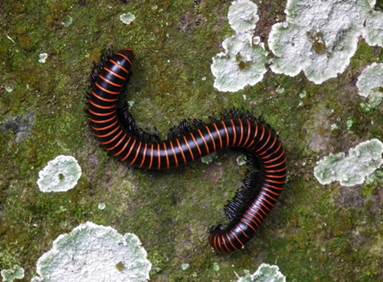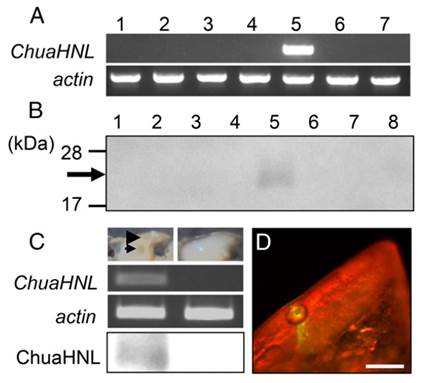


日本研究人员发现,在该国九州和本州地区分布的一种千足虫(学名马陆)含有一种制取某些医用和农用药物所需的酶,在它们身上提取这种酶的效率比常规方法更高。
富山县立大学的浅野泰久教授和同事在新一期美国《国家科学院学报》网络版上报告说,这种千足虫体长约3厘米,拥有约100只脚,对人和农作物没有危害。当它们在栖息地大量繁殖时,其平均分布密度高达每平方米103条。
这种千足虫在受到攻击时,会释放出氢氰酸气。研究人员由此推测其体内应有合成氢氰酸的酶,并着手研究。
研究小组在九州地区的杉树林收集了约12万条千足虫,然后将其磨碎,从生成的液体中提取出了可合成氢氰酸的羟基扁桃腈裂合酶,平均每公斤千足虫可获取约0.12毫克这种酶。
羟基扁桃腈裂合酶可用于制造某些消炎及心脏病药物和农药。目前该成分主要从杏仁中提取,而千足虫体内的羟基扁桃腈裂合酶具有独特结构,活性更高,提取效率比用杏仁提炼高出4倍以上。而且这种“虫酶”在高温下也不易被破坏,稳定性良好。(来源:新华网 记者蓝建中)
Discovery and molecular and biocatalytic properties of hydroxynitrile lyase from an invasive millipede, Chamberlinius hualienensis
Abstract Hydroxynitrile lyase (HNL) catalyzes the degradation of cyanohydrins and causes the release of hydrogen cyanide (cyanogenesis). HNL can enantioselectively produce cyanohydrins, which are valuable building blocks for the synthesis of fine chemicals and pharmaceuticals, and is used as an important biocatalyst in industrial biotechnology. Currently, HNLs are isolated from plants and bacteria. Because industrial biotechnology requires more efficient and stable enzymes for sustainable development, we must continuously explore other potential enzyme sources for the desired HNLs. Despite the abundance of cyanogenic millipedes in the world, there has been no precise study of the HNLs from these arthropods. Here we report the isolation of HNL from the cyanide-emitting invasive millipede Chamberlinius hualienensis, along with its molecular properties and application in biocatalysis. The purified enzyme displays a very high specific activity in the synthesis of mandelonitrile. It is a glycosylated homodimer protein and shows no apparent sequence identity or homology with proteins in the known databases. It shows biocatalytic activity for the condensation of various aromatic aldehydes with potassium cyanide to produce cyanohydrins and has high stability over a wide range of temperatures and pH values. It catalyzes the synthesis of (R)-mandelonitrile from benzaldehyde with a 99% enantiomeric excess, without using any organic solvents. Arthropod fauna comprise 80% of terrestrial animals. We propose that these animals can be valuable resources for exploring not only HNLs but also diverse, efficient, and stable biocatalysts in industrial biotechnology.
原文链接:http://www.pnas.org/content/early/2015/08/05/1508311112.full.pdf



